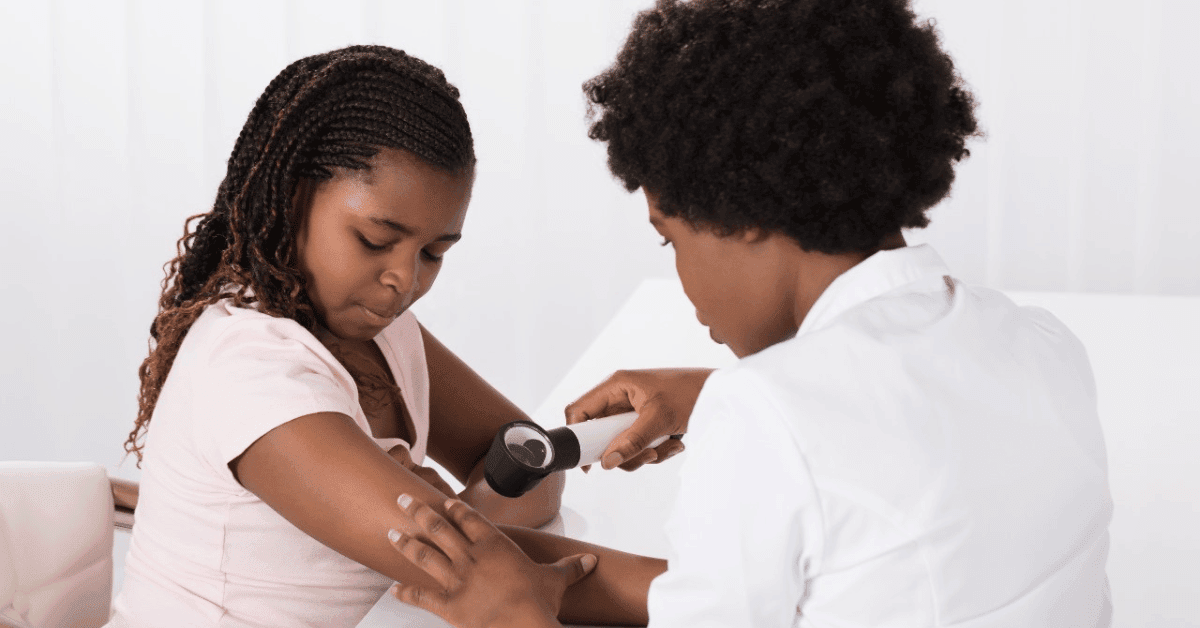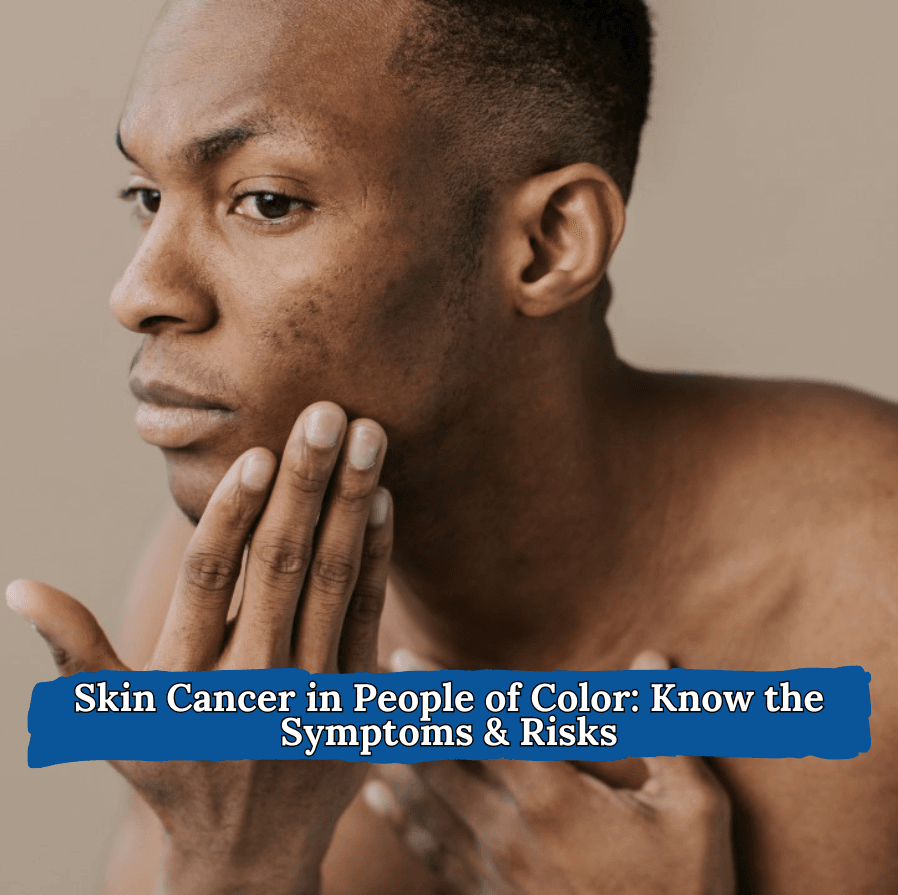Skin cancer, while often associated with lighter skin tones, affects individuals of all skin colors. However, in people of color, it is frequently diagnosed at more advanced stages, leading to poorer outcomes. Understanding the symptoms and causes of skin cancer in people of color is crucial for early detection and effective treatment.
Prevalence and Types of Skin Cancer in People of Color
Skin cancer accounts for:
- 1 to 2% of all cancers in Black individuals.
- 2 to 4% in Asian individuals.
- 4 to 5% in Hispanic individuals.
The most common types of skin cancer in people of color include:
- Squamous Cell Carcinoma (SCC): The most prevalent skin cancer among Black individuals.
- Basal Cell Carcinoma (BCC): While less common, BCC can occur in people of color and may present differently than in lighter skin tones.
- Melanoma: Although rare, melanoma tends to be more aggressive in people of color and is often diagnosed at a later stage.
Symptoms of Skin Cancer in People of Color

Skin cancer can manifest differently in people with darker skin tones. Key symptoms to watch for include:
- New Growths or Bumps: The appearance of a new spot, bump, or growth that wasn’t present before.
- Changes in Existing Moles: Alterations in size, shape, or color of a mole.
- Non-Healing Sores: Sores that do not heal or repeatedly return, especially around previous injuries.
- Dark Patches of Skin: Areas of skin that become darker and may grow or change over time.
- Thickened or Scaly Patches: Skin areas that become thicker, scaly, rough, or dry.
- Dark Lines Under Nails: A dark line appearing under or around a fingernail or toenail.
It’s important to note that in people of color, skin cancer often develops in less sun-exposed areas, such as the palms, soles, under nails, and inside the mouth or nose.
Causes and Risk Factors
Also Read:
- Why DEET Repellent is Essential for Travelers and Residents in High-Risk Countries
- DEET vs. DEET-Free Mosquito Repellents: Benefits, Differences, and How to Choose the Right One
- The Difference Between Chemical Burns from Bleaching Products and Sunburn: Dangers and Treatments
- Glycolic Acid vs. Salicylic Acid: Understanding the Key Differences
- Dangers of Skin Bleaching
While ultraviolet (UV) radiation from sun exposure is a well-known risk factor for skin cancer, in people of color, other factors also play significant roles:
- Genetics: Family history of skin cancer can increase risk.
- Chronic Inflammation or Scarring: Areas of the skin that have been chronically inflamed or scarred are more susceptible to developing skin cancer.
- Human Papillomavirus (HPV): Certain strains of HPV have been linked to an increased risk of SCC.
- Chemical Exposure: Exposure to certain chemicals, such as arsenic, can elevate the risk of skin cancer.
- Reduced Awareness and Screening: A lack of awareness about skin cancer risks in people of color can lead to delayed diagnosis and treatment.
Challenges in Diagnosis
Skin cancer in people of color is often diagnosed at later stages due to several factors:
- Atypical Presentation: Skin cancer may present differently in darker skin tones, leading to misdiagnosis or delayed recognition.
- Location of Lesions: The tendency for skin cancer to develop in less sun-exposed areas can result in lesions being overlooked.
- Limited Awareness: Both patients and healthcare providers may have limited awareness of skin cancer risks in people of color, contributing to delayed diagnosis.
Prevention and Early Detection

To reduce the risk of skin cancer and promote early detection in people of color:
- Regular Skin Examinations: Perform monthly self-examinations, paying close attention to less sun-exposed areas.
- Sun Protection: Use broad-spectrum sunscreen with an SPF of 30 or higher on exposed skin, wear protective clothing, and seek shade during peak sun hours.
- Prompt Medical Attention: Consult a dermatologist if you notice any new or changing skin lesions, especially in areas not typically exposed to the sun.
- Education and Awareness: Increase awareness about the risk of skin cancer in people of color among both the public and healthcare providers to promote early detection and treatment.
By understanding the unique symptoms and causes of skin cancer in people of color, individuals and healthcare providers can work together to ensure timely diagnosis and effective treatment, improving outcomes for this population.
Frequently Asked Questions (FAQs)
1. Is skin cancer common in people of color?
While skin cancer is less common in people of color compared to lighter-skinned individuals, it is often diagnosed at a more advanced stage, making early detection critical.
2. What are the early warning signs of skin cancer in darker skin tones?
Early signs include non-healing sores, dark streaks under nails, thickened or scaly skin patches, and new growths or bumps that change in size, color, or shape.
3. Can people of color get skin cancer even if they don’t sunburn easily?
Yes. Although melanin provides some natural protection against UV rays, skin cancer can still develop due to genetic factors, chronic inflammation, HPV, and chemical exposure.
4. Where does skin cancer commonly appear in people of color?
Skin cancer in people of color often appears in areas that receive little sun exposure, such as the palms, soles, under nails, and inside the mouth or nose.
5. How can people of color lower their risk of skin cancer?
Preventative steps include using sunscreen daily, wearing protective clothing, performing regular skin self-checks, and seeking medical attention for any unusual skin changes.



